Understanding Different Cuts Of Steak For Stir-fry
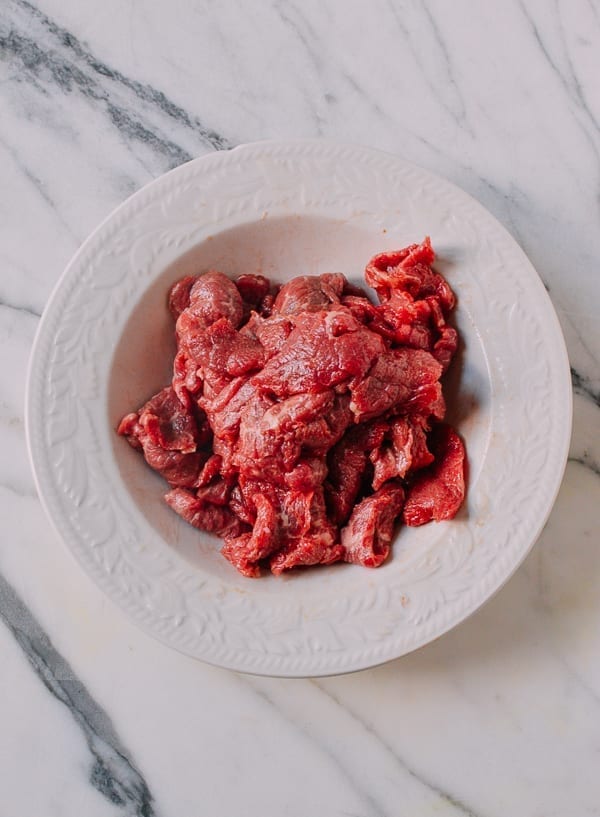
When it comes to stir-frying steak, it’s important to choose the right cut of meat. Different cuts have varying levels of tenderness and flavor, making some better suited for stir-fry than others. Ribeye and sirloin are two popular choices, known for their tenderness and rich flavor. Flank and skirt steak are leaner options that work well when thinly sliced against the grain. Each cut has its own unique characteristics, so consider your preferences and cooking style when selecting the best steak for stir-fry.
Ribeye And Sirloin
Ribeye and sirloin are two popular cuts of steak that are well-suited for stir-fry. Ribeye steak is known for its rich flavor and tenderness due to its well-marbled meat. It is best cooked to medium-rare or medium to retain its juiciness. On the other hand, sirloin steak is a lean cut with good flavor. It is versatile and can be sliced thinly against the grain for stir-frying. Both cuts provide a delicious and satisfying base for your stir-fry dish.
Flank And Skirt
Flank and Skirt steak are two excellent choices for stir-fry. Flank steak comes from the abdominal area of the cow and has a robust flavor. It is best sliced thinly against the grain to maximize tenderness. Skirt steak, on the other hand, is prized for its intense beefy flavor and is often used in fajitas. Both cuts cook quickly and are perfect for high-heat stir-frying, resulting in delicious and tender meat. Remember to slice them against the grain for maximum tenderness.
Choosing The Right Marbling And Fat Content
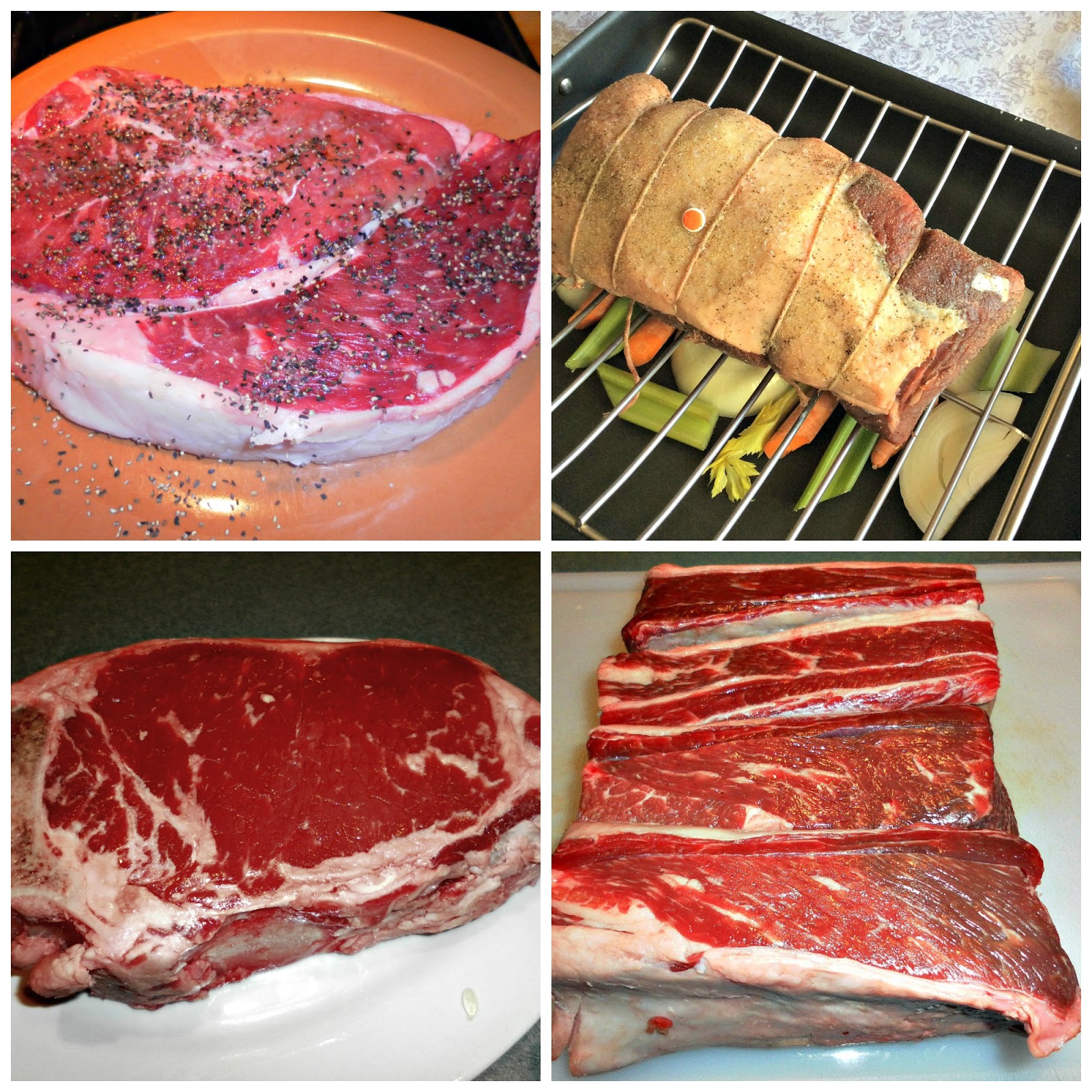
When selecting a cut of steak for stir-fry, it’s important to consider the marbling and fat content. Marbling refers to the small flecks of fat within the meat, which enhances flavor and tenderness. Look for steaks with a good amount of marbling, as it adds richness to your stir-fry dish. As for fat content, aim for a moderate amount to keep the meat juicy without making it too greasy. Striking the right balance of marbling and fat will ensure a delicious and succulent stir-fry experience.
Importance Of Marbling
Marbling plays a crucial role in the success of stir-fry steak. The small flecks of fat within the meat provide moisture and flavor, resulting in a tender and juicy dish. The intramuscular fat melts during cooking, infusing the meat with a rich and savory taste. Marbling also helps prevent the meat from becoming dry and tough, ensuring a satisfying texture. Choosing cuts of steak with good marbling will elevate the overall quality and taste of your stir-fry.
Optimal Fat Content
The optimal fat content for stir-fry steak is around 10-15%. This level of fat provides a good balance between tenderness and flavor. Too much fat can result in an overly greasy dish, while too little fat can lead to dry and tough meat. Choosing cuts with the right amount of fat will ensure that the steak remains juicy and delicious. Look for steaks with marbling throughout the meat, as this indicates a good fat content.
Tenderizing Techniques For Stir-fry Steak
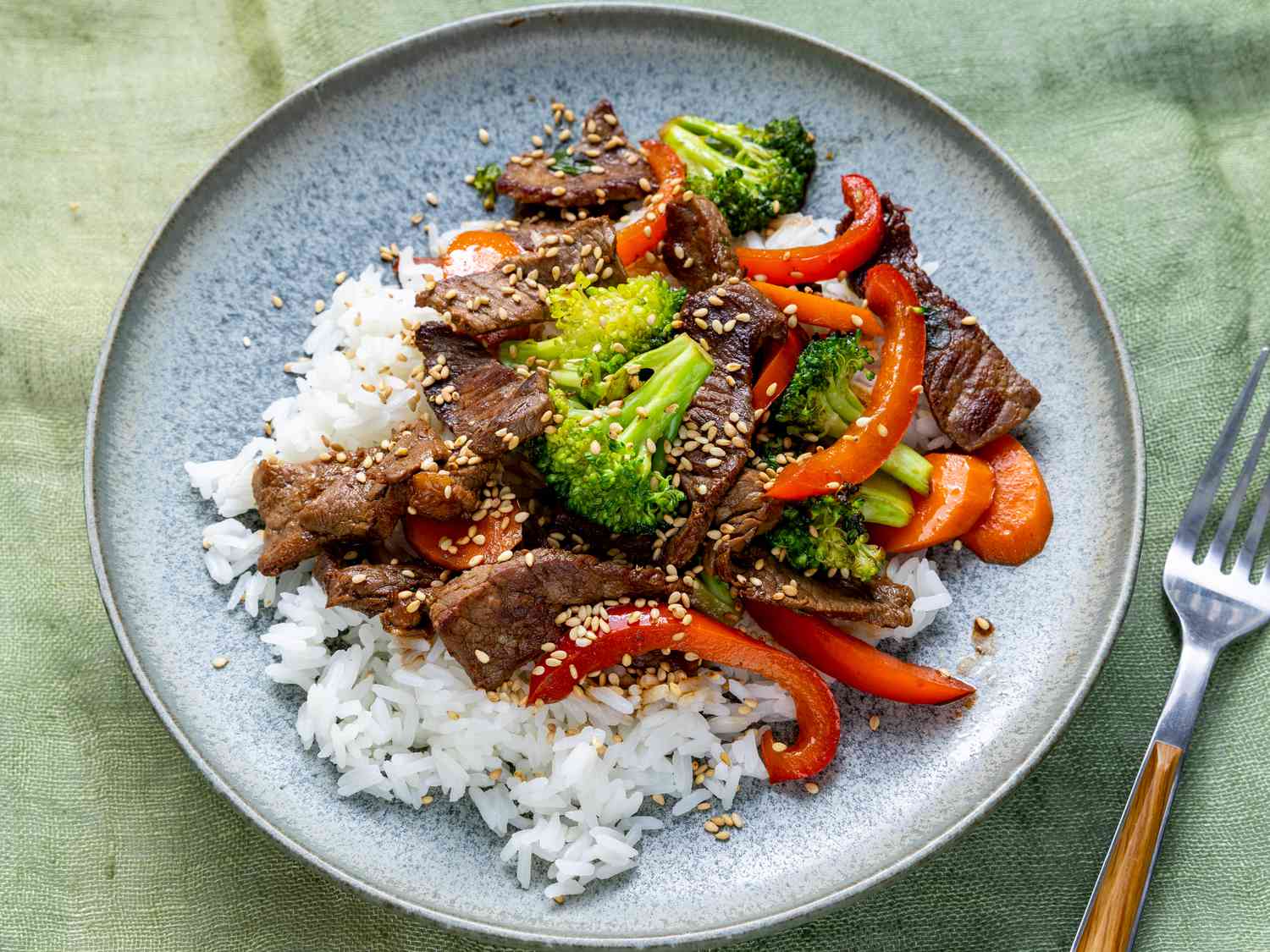
There are a few tenderizing techniques you can use to ensure that your stir-fry steak turns out perfectly tender. One popular method is marinating the steak before cooking. This involves soaking the meat in a mixture of herbs, spices, and acids to help break down the tough fibers and infuse it with flavor. Another technique is velveting, which involves coating the thinly sliced steak in a mixture of cornstarch, egg whites, and oil before cooking. This creates a protective layer that helps seal in juices and enhances tenderness.
Marinating
Marinating is a key technique for achieving tender and flavorful stir-fry steak. By soaking the meat in a mixture of herbs, spices, and acids, the tough fibers are broken down and the flavors are infused. For the best results, marinate the steak for at least 30 minutes, but preferably overnight, in the refrigerator. Common ingredients for a stir-fry marinade include soy sauce, oil, and starch (such as cornstarch or tapioca flour). These ingredients not only tenderize the meat but also help to seal in moisture during cooking.
Velveting
Velveting is a popular technique used to achieve tender and velvety textured steak in stir-fry dishes. To velvet the steak, start by slicing the meat and sprinkling it with baking soda. This helps to tenderize the meat. Then, mix together a marinade of oil, starch, and soy sauce. Coat the sliced meat with the marinade and let it sit for 10-15 minutes. The baking soda and marinade work together to break down the proteins in the meat, resulting in a tender and succulent stir-fry steak.
Slicing And Prepping Techniques For Stir-fry
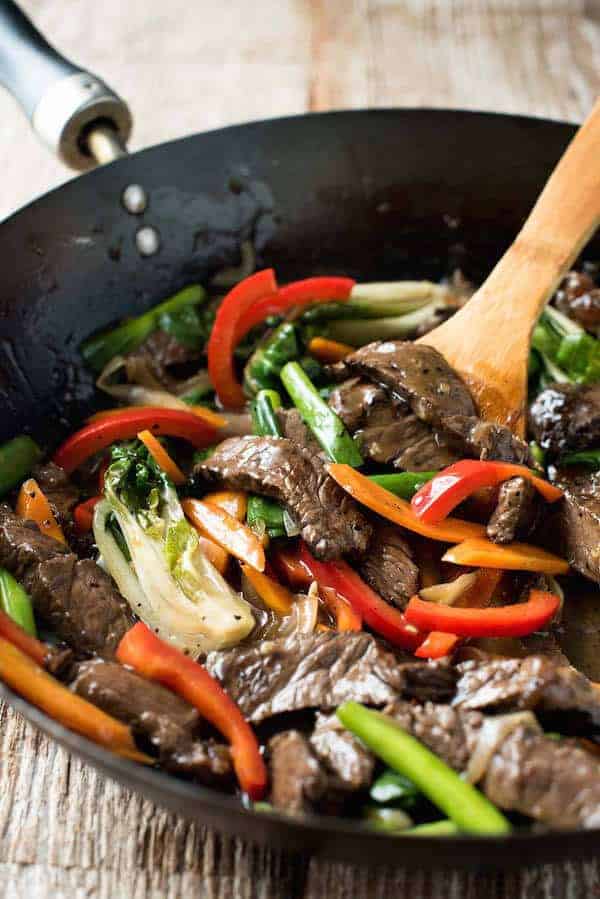
To ensure tender and flavorful stir-fry steak, it is crucial to use the right slicing and prepping techniques. The key is to slice the meat thin and against the grain. Hold the knife at a 45-degree angle to create wider and flatter slices. This technique helps break up the muscle fibers, resulting in tender beef. Additionally, prepping the steak involves marinating or velveting it to further enhance its tenderness. Proper slicing and prepping techniques are vital for achieving the perfect stir-fry steak.
Proper Thin Slicing
Proper thin slicing is crucial for ensuring tender and flavorful stir-fry steak. To achieve the best results, hold the knife at a 45-degree angle when slicing the beef. This angle creates wider and flatter slices, which helps to break up the muscle fibers, resulting in a more tender texture. It is also important to slice the beef against the grain, as this further ensures tenderness. By following these techniques, you can guarantee that each bite of your stir-fry will be perfectly tender and delicious.
Prepping The Steak
Before cooking the steak for stir-fry, it is important to properly prep it. Start by trimming any excess fat and connective tissue from the steak. Then, cut the steak into thin, uniform slices against the grain. This will help break up the muscle fibers and ensure tenderness. It is also helpful to marinate the steak for added flavor and tenderness. Additionally, make sure to follow proper food safety practices, such as washing your hands and using clean utensils to avoid cross-contamination.
Best Seasonings And Sauces For Stir-fry
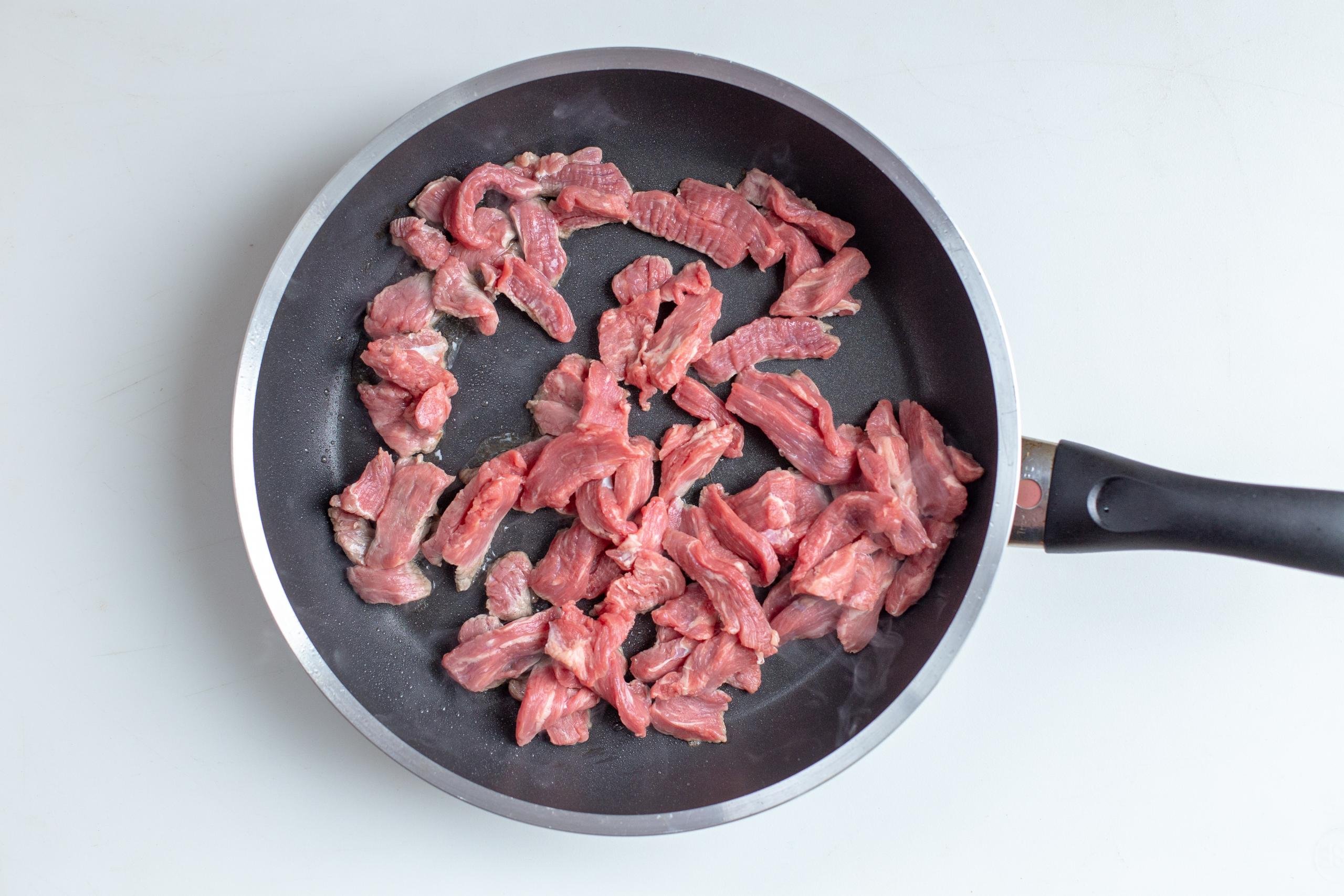
When it comes to seasoning and saucing your stir-fry, there are numerous options to enhance the flavor. Traditional stir-fry seasonings like soy sauce, garlic, and ginger are always a good choice. However, you can also experiment with different combinations of sauces like oyster sauce, hoisin sauce, or chili sauce to add a unique twist to your dish. Don’t forget to include some aromatics like green onions or cilantro for added freshness. Remember to adjust the amount of seasoning and sauce according to your preference. Happy stir-frying!
Traditional Stir-fry Seasonings
Some traditional stir-fry seasonings include soy sauce, garlic, and ginger. These ingredients add depth and rich flavors to your dish. Soy sauce provides a savory and salty taste, while garlic adds a wonderful aroma and robust flavor. Ginger adds a hint of spice and a refreshing zing. These classic seasonings work together to create a delicious and authentic stir-fry experience. Adjust the amount of each seasoning according to your taste preference to achieve the perfect balance of flavors.
Flavorful Sauce Combinations
When it comes to stir-fries, the sauce is what brings everything together and adds an irresistible burst of flavor. There are endless combinations of sauces that you can use to elevate your steak stir-fry. Some popular options include teriyaki sauce, oyster sauce, hoisin sauce, and black bean sauce. These sauces provide a perfect balance of sweet, savory, and umami flavors. Experiment with different combinations and adjust the amount of each sauce to suit your taste preferences. Don’t be afraid to get creative and explore new flavor profiles to make your stir-fry truly delicious.
Cooking Tips And Temperature Control

To achieve the perfect stir-fry, it’s important to follow some cooking tips and maintain proper temperature control. Firstly, the high heat stir-fry method is essential for quick and flavorful cooking. Heat your wok or pan until it’s smoking hot before adding the steak. Secondly, it’s recommended to cook the steak to an internal temperature of 130-135°F for medium-rare or 140-145°F for medium. This ensures that the steak is cooked to your preferred level of doneness. Lastly, remember to let the steak rest for a few minutes before slicing and serving to retain its juices and flavors.
High Heat Stir-fry Method
The high heat stir-fry method is essential for achieving the perfect steak stir-fry. To ensure quick and flavorful cooking, it is important to heat the wok or pan until it is smoking hot before adding the steak. This high heat allows for fast searing and caramelization of the meat, resulting in a delicious crispy exterior. The high heat also helps to retain the juiciness of the steak and prevents it from becoming overcooked. Remember to follow this method to achieve a successful steak stir-fry every time.
Recommended Internal Temperature
The recommended internal temperature for a perfectly cooked steak stir-fry depends on the desired level of doneness. For medium-rare, the steak should reach an internal temperature of 145°F (63°C). For medium, the temperature should be around 160°F (71°C). Well-done steak, although not recommended for stir-fry, should reach an internal temperature of 170°F (77°C) or above. It is important to note that the steak will continue to cook slightly as it rests, so it is advisable to remove it from the heat when the temperature is about 10 degrees below the desired target. This resting period allows the steak to retain its juices and reach the ideal internal temperature.
Resting The Steak
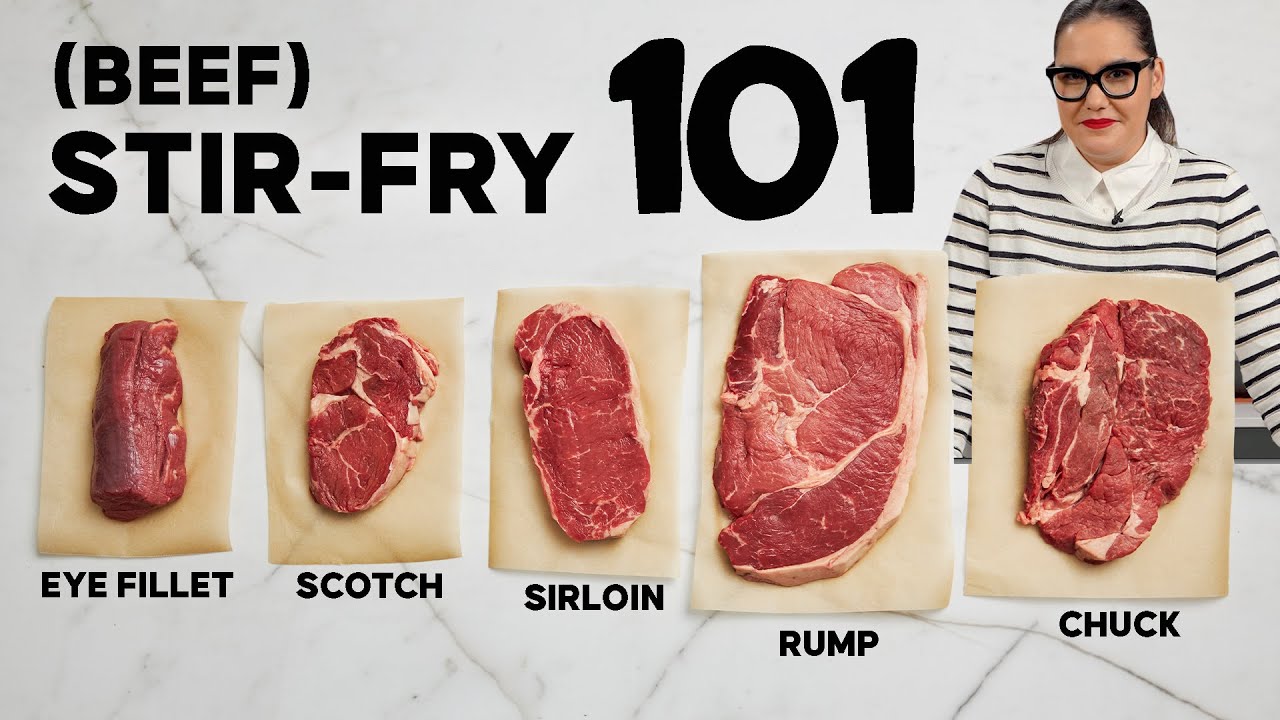
Resting the steak is a crucial step that should not be overlooked after cooking. Once the steak reaches the desired internal temperature, it should be removed from the heat and allowed to rest for about 5 to 10 minutes. During this resting period, the steak continues to cook slightly and the juices redistribute, resulting in a more flavorful and juicy steak. Resting also allows the steak to reach its optimal temperature throughout. Be sure to tent the steak with foil to keep it warm during the resting period.
FAQ – Best Steak for Stir Fry
Q: What is the best cut of steak for stir fry?
A: The best cut of steak for stir fry is one that is tender and can be quickly cooked to perfection. Some popular choices include flank steak, sirloin steak, or ribeye steak.
Q: Which cut of steak is the most tender for stir fry?
A: The most tender cut of steak for stir fry is typically the ribeye steak. With its marbling and tenderness, ribeye steak adds incredible flavor and juiciness to your stir fry.
Q: Can I use flank steak for stir fry?
A: Yes, flank steak is an excellent choice for stir fry. It has a rich, beefy flavor and a slightly chewy texture that pairs well with vegetables and sauces. Just make sure to slice it thinly against the grain for maximum tenderness.
Q: Is sirloin steak a good option for stir fry?
A: Absolutely! Sirloin steak is another popular choice for stir fry. It is moderately tender and has a robust flavor. It cooks quickly and maintains its juiciness, making it an excellent option for a tasty stir fry dish.
Q: How should I prepare the steak before stir frying?
A: To ensure the best results, it’s recommended to marinate the steak for at least 15-30 minutes before stir frying. You can marinate it in a flavorful combination of soy sauce, garlic, ginger, and sesame oil. This will help to tenderize the meat and infuse it with delicious flavors.
Q: How should I cook the steak for stir fry?
A: When cooking steak for stir fry, it’s important to use high heat and a quick cooking method. Heat your wok or skillet until it’s smoking hot, add oil, and sear the steak in small batches for about 2-3 minutes per side. This will give you a nicely browned exterior while keeping the interior juicy and tender.
Q: Can I use leftover steak for stir fry?
A: Definitely! Leftover steak can be a great option for a quick and flavorful stir fry. Simply slice the steak thinly and stir fry it with your favorite vegetables and sauces for a delicious meal.
Q: What vegetables go well with steak stir fry?
A: A wide variety of vegetables complement steak stir fry. Popular choices include bell peppers, broccoli, snow peas, mushrooms, carrots, and onions. You can mix and match your favorite vegetables to create a colorful and balanced stir fry.
Q: What sauces can I use in my steak stir fry?
A: There are many options for sauces in a steak stir fry, depending on your taste preferences. Some classic choices include teriyaki sauce, soy sauce, oyster sauce, hoisin sauce, or a combination of these. Experimenting with different sauces will help you discover your own perfect flavor.
Remember, the key to a fantastic steak stir fry is using high-quality meat, slicing it thinly against the grain, cooking it quickly over high heat, and pairing it with flavorful vegetables and sauces. Get creative, have fun, and enjoy your delicious homemade steak stir fry!

Kemah Cafe is a family-owned eatery that takes pride in offering a delightful array of Vietnamese, Chinese, and Thai dishes. Located at the heart of the community, Kemah Cafe has been serving up delicious Pho and other authentic Asian cuisine for many years. Founded with a passion for sharing the flavors of the East, Kemah Cafe has become a beloved culinary destination for locals and visitors alike. The warm and welcoming atmosphere of the cafe, combined with the tantalizing aromas of freshly prepared dishes, creates an unforgettable dining experience.